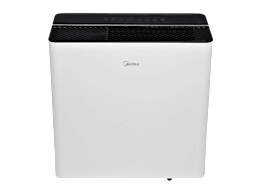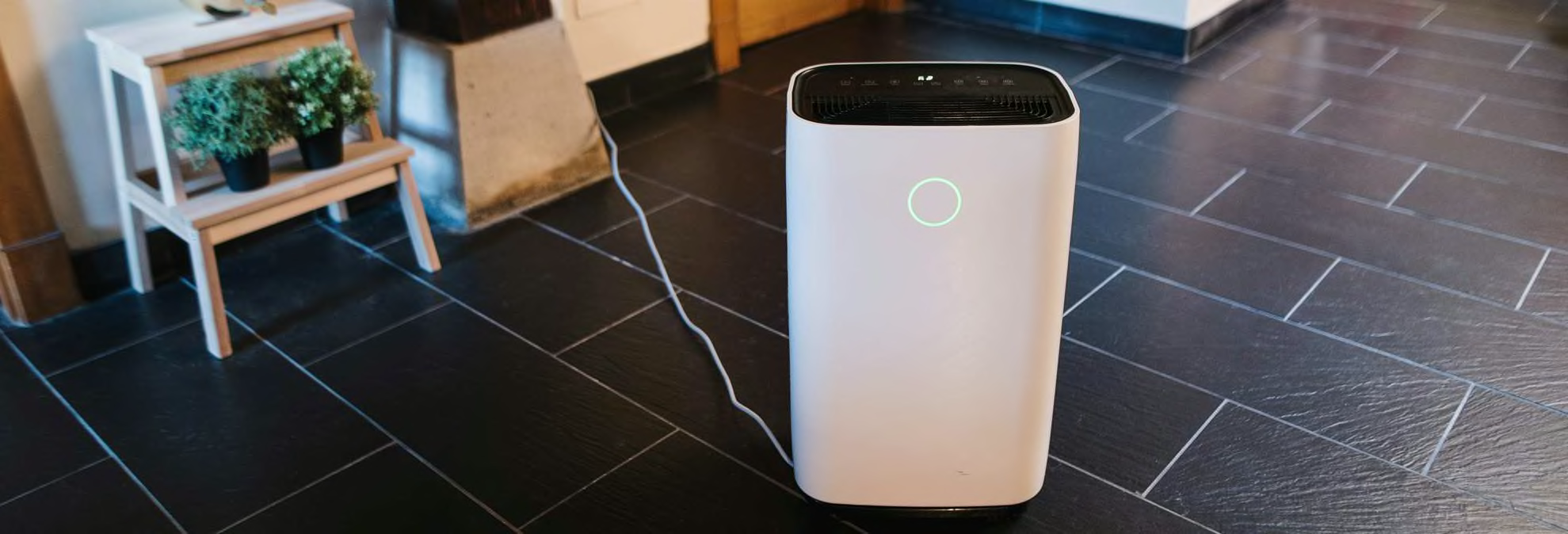
Dehumidifier Buying Guide

Senior Home & Tech Writer
With its drying power, a dehumidifier can bring the relative humidity inside your home to below 50 percent. Anything above that, and dust mites, mildew, and mold can grow. Drier air can also help keep allergies and other health problems at bay and just make your living quarters more comfortable. And in the event of a flooded basement or a leak in your roof, a dehumidifier can be downright indispensable.
In this buying guide, we’ll explore common dehumidifier features, the most popular dehumidifier brands, and what you need to know before picking a model. We’ll also explain how we test the models in our labs. And you can check out our dehumidifier ratings, which feature more than 70 options. We also have you covered with a dehumidifier sizing guide to help you find the right model for your space, tips on how to use your dehumidifier for the best results, and curated lists of the best dehumidifiers, highly rated dehumidifiers under $250, the quietest dehumidifiers, and the most reliable dehumidifier brands.
Types of Dehumidifiers
Dehumidifiers vary in the amount of moisture they can remove in a 24-hour span. CR divides the models we test into three categories based on the capacity and the volume of water the manufacturer claims the device can remove from the air. Medium- and large-capacity models usually cost more than small-capacity models. There are also whole-house dehumidifiers, which can dehumidify up to 5,000 square feet, according to manufacturers.
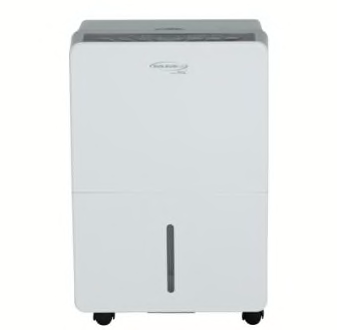
Small-Capacity Dehumidifiers
Areas of less than 600 square feet typically call for a small-capacity dehumidifier. Designed to remove less than 30 pints of moisture per day, these machines work best in spaces that are damp rather than wet.
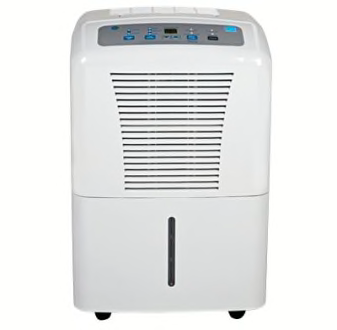
Medium-Capacity Dehumidifiers
Midsized models typically remove 30 to 40 pints of moisture per day. They’re best suited for areas of 600 to 800 square feet that are slightly damp or have a musty smell.
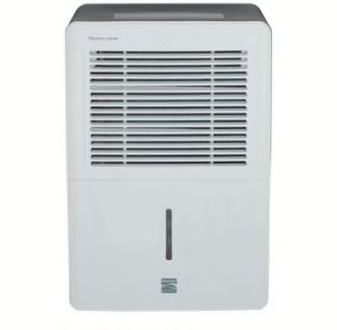
Large-Capacity Dehumidifiers
Large-capacity dehumidifiers are suitable for removing 40 pints or more from the air per day. They’re designed for large spaces (roughly 600 to 1,200 square feet) and smaller spaces with significant moisture problems, such as small puddles, condensation, or mold. Many can also handle a wider range of humidity levels.
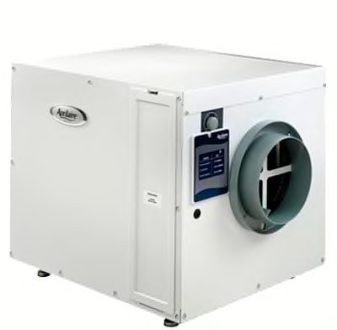
Whole-House Dehumidifiers
If high humidity tends to be a problem in more than one area of your home, you may want to consider getting a whole-house dehumidifier. These workhorses—available as portable units or add-ons to your central heating and air conditioning system—can handle areas of up to 5,000 square feet, manufacturers say. According to HomeAdvisor, prices range from $100 to $1,100 for a whole-home dehumidifier, depending on the size of the model. Those figures don’t include the additional cost for professional installation, which varies based on local labor rates. CR doesn’t currently test whole-house dehumidifiers.
How CR Tests Dehumidifiers
CR’s test engineers and survey teams assess every dehumidifier that enters our labs using the objective criteria below that define a quality appliance. The results are weighted and combined into the Overall Score for each model listed in our ratings charts.
- Water removal. We measure a dehumidifier’s ability to remove moisture from the air (the number of pints of water per day, as claimed by the manufacturer) in our test chamber set at 65° F and 60 percent relative humidity.
- Humidistat accuracy. While in our test chamber, we also determine how closely each dehumidifier can reach and maintain a set humidity level. This is a crucial assessment because a dehumidifier should be able to bring indoor humidity to below 50 percent. Above that, dust mites, mildew, and mold can grow.
- Energy efficiency. To gauge a dehumidifier’s energy efficiency, our engineers calculate the amount of energy it takes to remove a pint of water from the air. The best dehumidifiers use less energy, keeping electric costs to a minimum.
- Convenience. Our engineers evaluate how often you have to empty the tank. Generally, the larger the tank, the less often you need to do that.
- Noise. Noise can be a concern in living spaces. The decibel measurements in our dehumidifier tests, which are taken from 3 feet away, range from the low 50s to the upper 60s. By comparison, normal conversation is around 60 decibels, while a clothes washer is about 70 decibels midcycle.
- Reliability and owner satisfaction. To gauge a brand’s reliability and satisfaction, we ask CR members who purchased a new dehumidifier and owned it for five years or less about their experience. The latest survey results, collected in 2023 and 2025, include data on about 13,632 brand-new models purchased between 2014 and 2025.
What to Know Before You Buy a Dehumidifier
It’s possible—and perhaps even necessary—to mitigate some moisture problems without a dehumidifier. For everything else, here’s how to pick the right dehumidifier for your space.
Fix Existing Problems
Even the best dehumidifier might not work effectively if too much moisture seeps into your house from the outside. Unclogging gutters and making sure downspouts direct rainwater at least 5 feet from the dwelling can help. Keeping windows and exterior doors closed can also prevent humid air from entering your home.
Size Up Your Space
Consult our dehumidifier sizing guide—which offers step-by-step instructions and a handy chart—to help determine the ideal model for your space. In general, you’re better off with a somewhat larger unit.
Consider Noise
If you’re planning to put a dehumidifier in a bedroom, opt for a model that operates quietly. To narrow your search, consider buying one of the quietest dehumidifiers we’ve tested. All deliver strong performance overall.
Consider Tank Capacity
Dehumidifiers with small tanks—under 15 pints—need to be emptied more often than those with larger ones. If that’s a concern for you, pay attention to the tank size when viewing the specs on our dehumidifier ratings chart.
Determine Whether You Need a Drain Pump
The most hassle-free way to drain a dehumidifier is with a pump. CR’s ratings indicate which models come with one. Drain pumps can also expel water to an elevated location, a nice feature to have in a basement, says Misha Kollontai, an engineer who oversees our dehumidifier tests.
Common Dehumidifier Features
Portable dehumidifiers often have similar features. Some offer convenience, while others improve the appliance’s ability to dry out a room. Here are a few popular options.
- 1
- / 6
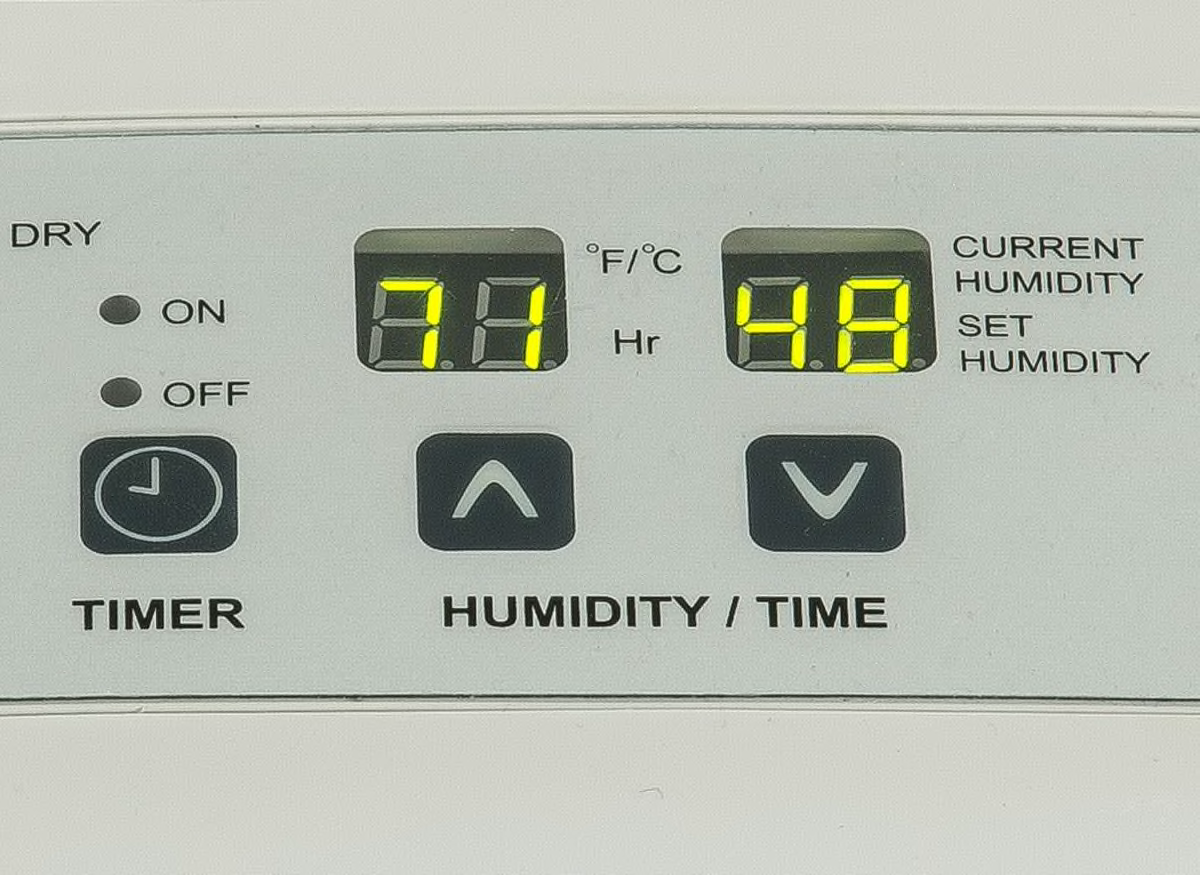
User-Friendly Controls
Electronic controls let you select a basic humidity level—normal, dry, or very dry—while digital controls let you program a desired humidity level using percentage settings. Some of the newest dehumidifiers include WiFi connectivity, allowing you to set schedules, start or stop operation, receive alerts (such as filter change reminders), and check on its status remotely. You can typically use your voice with smart assistants like Amazon Alexa or Google Assistant to control these models, as well.
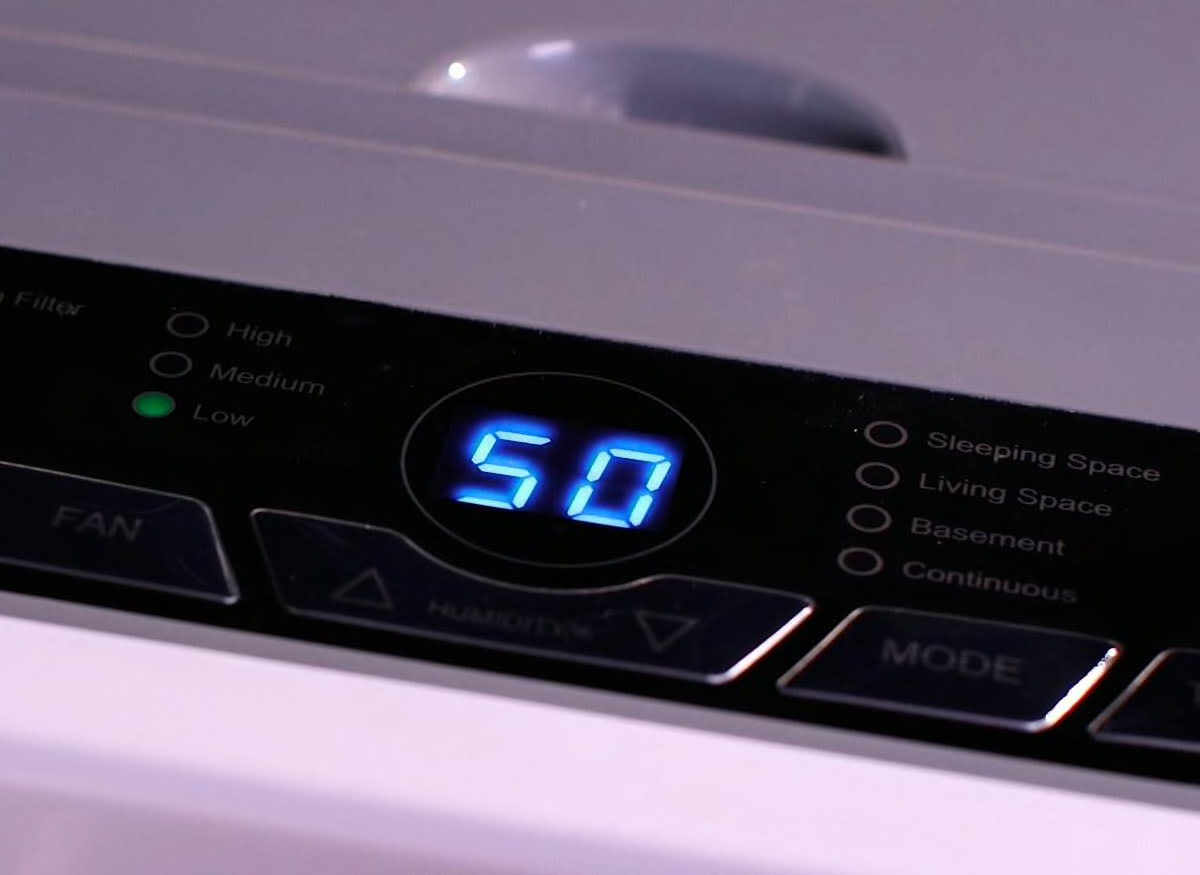
Auto Restart
Found on most dehumidifiers that CR has tested, auto restart turns the unit back on after a power outage, which is handy if there’s a blackout or another interruption of power while you’re away from home.
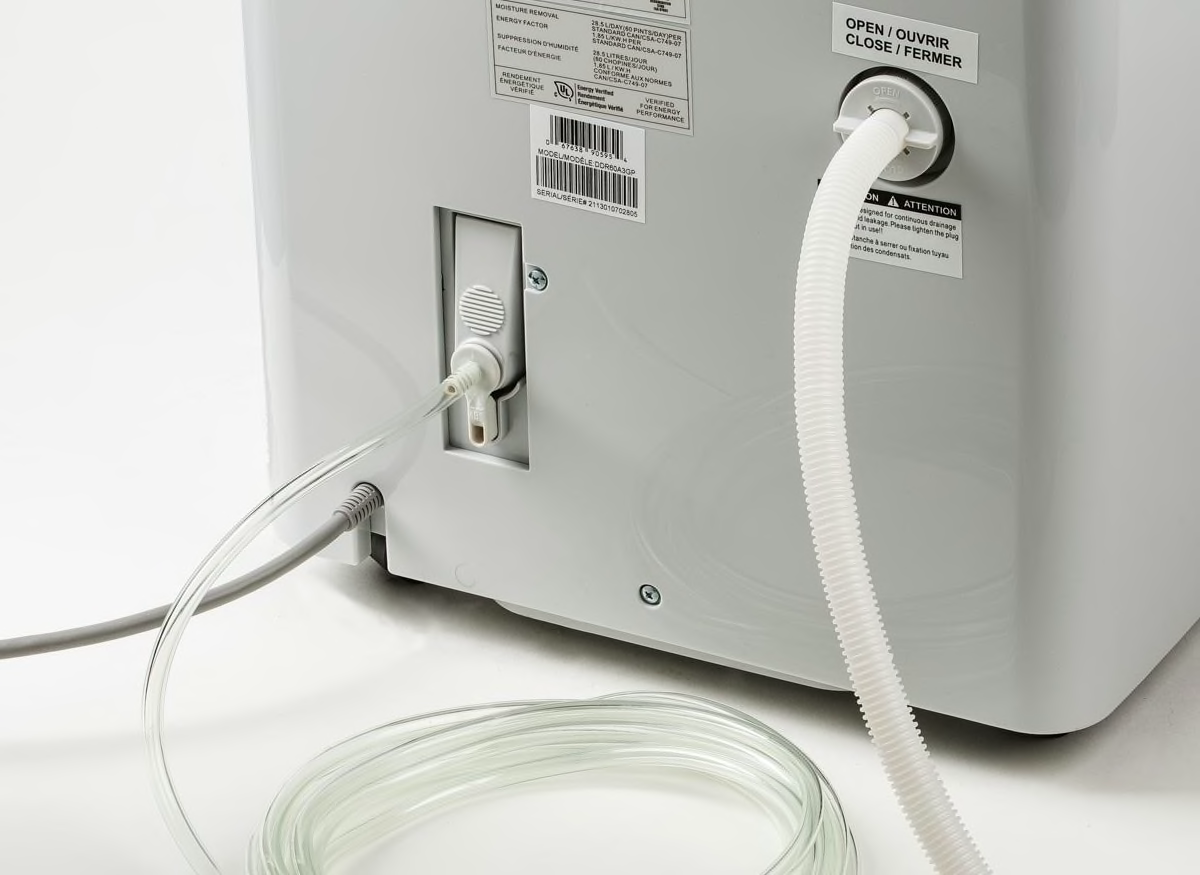
Hose Connection
All of the models in our ratings allow you to connect a hose that diverts the condensed water to a floor drain, sparing you from having to empty a bucket. In a basement without a floor drain, a dehumidifier with a pump can send water up to a window, a slop sink, or some other drain above floor level. That’s a lot easier than lugging a full tank of water around.
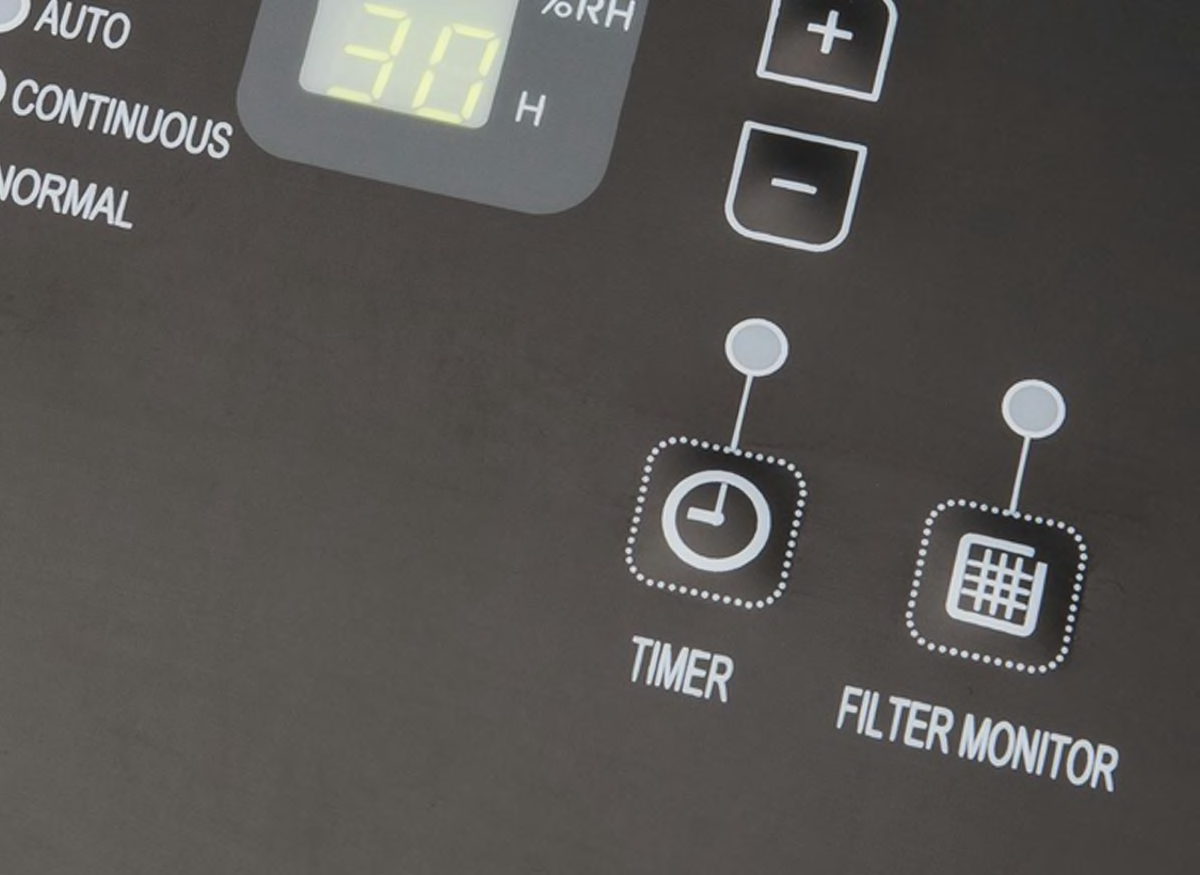
Timer
A timer can program the unit to turn on and off while you’re out of the house. It can also save you money by turning the dehumidifier on at night in areas with cheaper off-peak electricity rates.
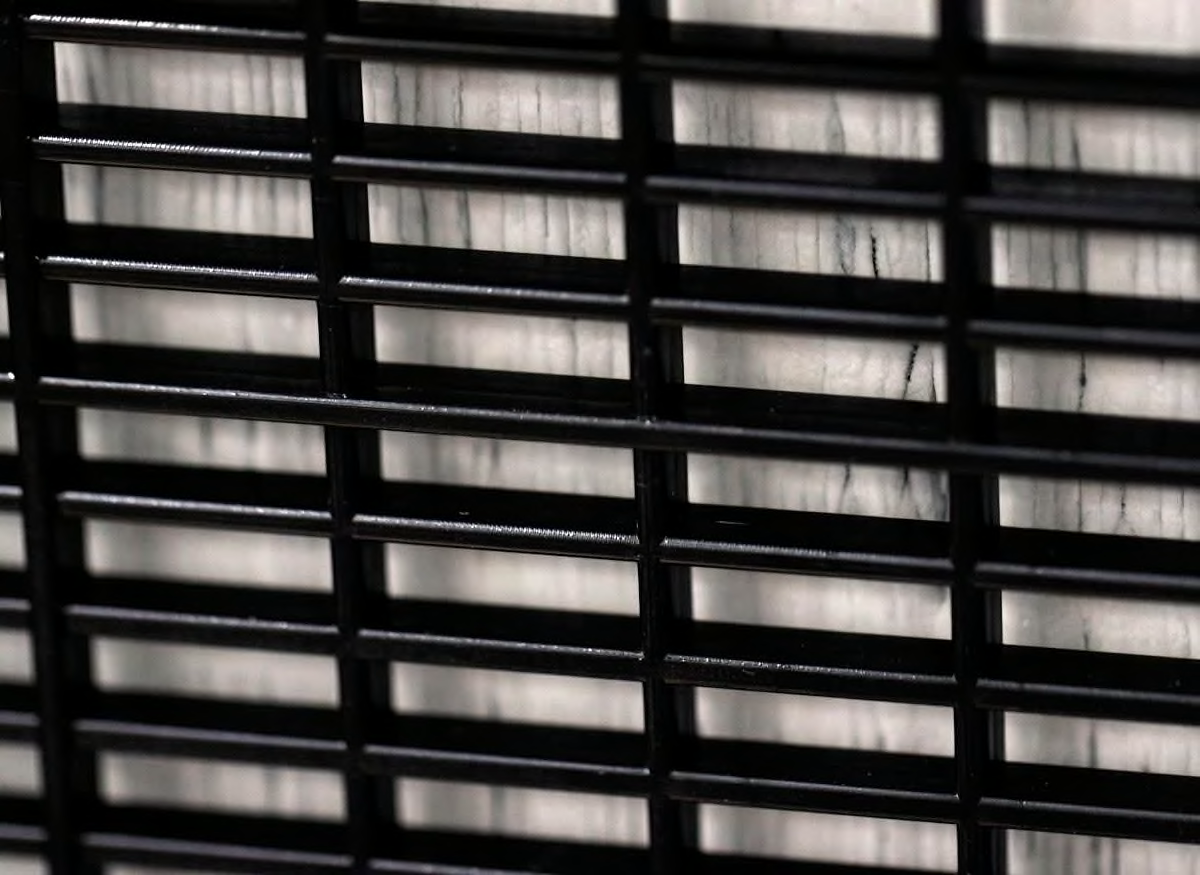
Frost Control Sensor
Most of the dehumidifiers in our ratings have a sensor that shuts the machine off if frost forms on the coils, which is common in cooler spaces. This prevents the unit from wasting energy by running without dehumidifying.
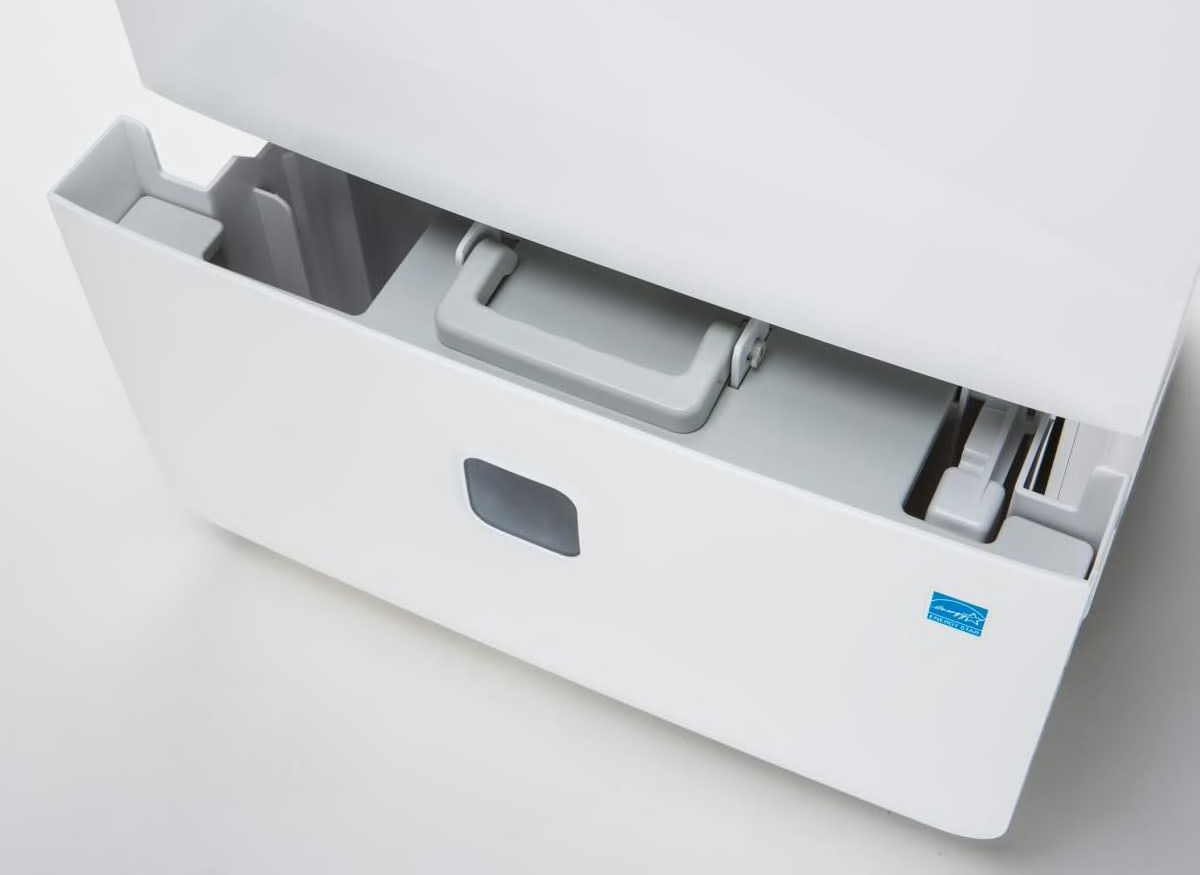
Easy-to-Empty Bucket or Tank
Look for a unit with comfortable handles and a cover that permits convenient removal and carrying when full.
User-Friendly Controls
Electronic controls let you select a basic humidity level—normal, dry, or very dry—while digital controls let you program a desired humidity level using percentage settings. Some of the newest dehumidifiers include WiFi connectivity, allowing you to set schedules, start or stop operation, receive alerts (such as filter change reminders), and check on its status remotely. You can typically use your voice with smart assistants like Amazon Alexa or Google Assistant to control these models, as well.
Auto Restart
Found on most dehumidifiers that CR has tested, auto restart turns the unit back on after a power outage, which is handy if there’s a blackout or another interruption of power while you’re away from home.
Hose Connection
All of the models in our ratings allow you to connect a hose that diverts the condensed water to a floor drain, sparing you from having to empty a bucket. In a basement without a floor drain, a dehumidifier with a pump can send water up to a window, a slop sink, or some other drain above floor level. That’s a lot easier than lugging a full tank of water around.
Timer
A timer can program the unit to turn on and off while you’re out of the house. It can also save you money by turning the dehumidifier on at night in areas with cheaper off-peak electricity rates.
Frost Control Sensor
Most of the dehumidifiers in our ratings have a sensor that shuts the machine off if frost forms on the coils, which is common in cooler spaces. This prevents the unit from wasting energy by running without dehumidifying.
Easy-to-Empty Bucket or Tank
Look for a unit with comfortable handles and a cover that permits convenient removal and carrying when full.
Changes in Dehumidifier Test Standards
The labels and packaging for dehumidifiers sold since the beginning of 2020 typically claim that the units can remove 20, 30, or 45 pints in 24 hours. Earlier models cited removal rates of 30, 50, or even 70 pints per day. As more models are released using the new standards, the old standards become less relevant. But dehumidifiers still use the old claims in model numbers, which can be a bit confusing.
The lower figures don’t mean these new models remove less water, though. Rather, in accordance with more realistic government standards introduced in 2019, they’re tested by the manufacturer in a real-world scenario with less moisture to remove.
Dehumidifiers are typically used in basements, and the Department of Energy has changed its test standard by lowering the room temperature from 80° to 65° F to better reflect typical basement conditions. There’s less water to remove in cooler air, which is why the number of pints of water drops. The relative humidity level in both the old and new tests is 60 percent. CR uses the new standard in its tests.
Dehumidifier FAQs
How Does a Dehumidifier Work?
Dehumidifiers help guard against mold and mildew—two types of fungus that can pose health risks, especially to people with sensitivities—by removing moisture from the air. They use a fan to move air in a room over refrigerated coils, collecting moisture in a tank. Some models are more effective than others, so pay attention to the water removal test results in our ratings.
How Do You Clean a Dehumidifier?
A dehumidifier that’s not thoroughly cleaned can breed mold spores that are harmful to people with allergies. To prevent the growth of mold and other contaminants, CR recommends deep cleaning and sanitizing the emptied tank at least once every week or two. Filters should also be washed and dried regularly according to the manual to maintain efficiency. (Many models in our ratings have an indicator light that tells you when it’s time to clean the filter.) When a dehumidifier is in a dusty area, the filter needs to be cleaned more frequently, says CR’s Kollontai.
Do Dehumidifiers Cool the Air?
While a dehumidifier can make a space feel less muggy by removing moisture from the air, it doesn’t actually cool a room. In fact, it sometimes has the opposite effect of producing heat, which, in an isolated space, can raise the room temperature a bit. That said, any increase is probably marginal, to the point where the room may feel cooler and more comfortable because it’s less humid.
Should You Keep a Dehumidifier Running All the Time?
Worried that keeping your dehumidifier running will spike your energy bill? Don’t be. Most dehumidifiers use only 300 to 700 watts of electricity, depending on the capacity. That’s about the same energy consumption as a typical refrigerator, according to EnergySage, a website that helps consumers shop for renewable energy solutions. And there’s another reason it’s okay to keep a dehumidifier running: “It should respond to the humidity levels dropping, and kick back on when the levels climb again,” Kollontai says. Pro tip: “If you notice that the unit doesn’t seem to ever shut down, your dehumidifier’s capacity is likely too low for the space you’re trying to dehumidify.”
Can You Drink Dehumidifier Water?
Believe it or not, many people ask this question. The answer is a hard no, according to a Stanford magazine article. And before you start getting any ideas, know that dehumidifier water can’t be sterilized through boiling. Bottom line: Stick to drinking tap water or bottled water.
Dehumidifier Brands
CR’s market analysts monitor developments across more than 20 brands, tracking where each’s dehumidifiers are sold and how much they cost.
There are only two Amana dehumidifiers, one large and one medium, in our ratings. Look for them at Best Buy, Home Depot, and Lowe’s at modest prices.
The online retailer giant’s in-house brand makes models with a variety of capacities.
This brand manufactures dehumidifiers with various capacities. They can be found at Amazon, Home Depot, Lowe’s, and Walmart.
This brand sells dehumidifiers in various sizes. They’re available at Amazon, Home Depot, and other online retailers.
This well-known name in air conditioning also sells dehumidifiers in a range of sizes. Look for them at Amazon, Overstock, and Walmart.
This widely sold appliance brand makes small, medium, and large dehumidifiers available at Best Buy, Home Depot, Lowe’s, Target, and Walmart.
Another widely sold brand, GE dehumidifiers are available in a variety of capacities. They’re sold at Amazon, Home Depot, Lowe’s, Walmart, and other online retailers.
This brand, owned by the same parent company that owns GE Appliances, makes dehumidifiers in a variety of sizes. They’re sold at Amazon, Lowe’s, Target, and Walmart.
This brand offers dehumidifiers in various capacities. They’re sold at Amazon and Walmart.
Honeywell makes models in various capacities. They’re sold at Amazon, Best Buy, Home Depot, Lowe’s, Walmart, and other online retailers.
This brand’s dehumidifiers can be found on Amazon and at Wayfair.
You can find this brand’s dehumidifiers at many major retailers, including Amazon, Best Buy, Home Depot, Lowe’s, and Walmart.
This appliance giant has only one dehumidifier in our ratings, a large-capacity model, found at Amazon, Home Depot, Walmart, and independent retailers.
Midea makes small, medium, and large dehumidifiers under several brands, including Midea, Eureka, and Toshiba. They can be found on Amazon and at Home Depot, Sam’s Club, Walmart, and select online retailers.
This brand offers small, medium, and large dehumidifiers on Amazon and at Walmart.
SPT offers dehumidifiers in various capacities on Amazon and at Home Depot, Lowe’s, and Walmart.
This mass-market brand has a wide variety of dehumidifiers in our ratings—small, medium, and large options—that are sold on Amazon and at Walmart.
This brand offers dehumidifiers with various capacities. They’re available on Amazon and at Home Depot and Walmart.
Whirlpool dehumidifiers are available in a variety of sizes and sold on Amazon and other online retailers, as well as at Best Buy, Home Depot, Lowe’s, Target, and Walmart.
This brand makes dehumidifiers that are sold on Amazon and at Home Depot, Target, and Walmart.























